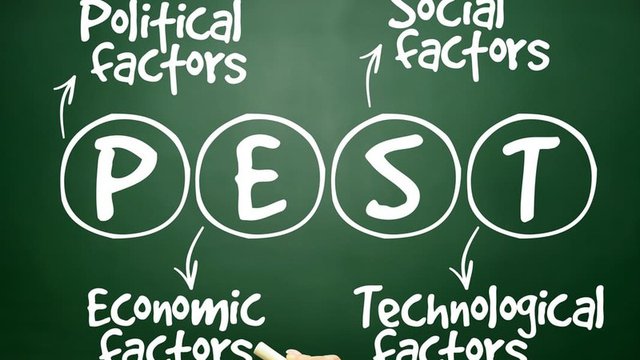

Did you know that many strategic decisions in the world of sport are based on environmental analysis?
Understanding the factors that influence organisations beyond the playing field is essential to ensuring the long-term success of a sports entity. And this is where PESTEL analysis comes into play — an essential strategic planning tool for those who aspire to lead in the sports sector.
If you are interested in working in sports management, studying the Master’s in Sports Management in Madrid or the Master’s in Online Sports Management at Escuela Universitaria Real Madrid - Universidad Europea could be the step that helps you advance your career. You will learn to lead teams, organisations, and sports brands, while gaining access to exclusive professional opportunities and international experiences.
In this post, we explain what PESTEL analysis is, how to apply it to the sports sector, and why mastering it can make a significant difference to your professional future.
Defining what PESTEL is
PESTEL analysis is a strategic tool that helps organisations understand the external environment in which they operate. The term “PESTEL” is an acronym for six key factors:
- Political
- Economic
- Social
- Technological
- Environmental
- Legal
Each of these dimensions provides valuable insight into the opportunities and challenges that may impact a business, project, or institution. In the sports industry, PESTEL analysis helps decision-makers anticipate trends, minimise risks, and capitalise on emerging opportunities.
PESTEL should not be confused with SWOT analysis. While SWOT identifies internal strengths and weaknesses, PESTEL focuses on external influences. Used together, they provide a comprehensive strategic picture.
What is PESTEL analysis used for in sports?
In the sports context, this tool enables managers to evaluate how political, economic, social, technological, environmental, and legal conditions affect clubs, federations, academies, sports brands, and events. Understanding these dynamics is crucial for developing effective strategies, preventing risks, and identifying new opportunities.
The six factors of PESTEL analysis in sport
Political factors
Government decisions and public policies have a direct impact on sport. Examples include:
- Tax regulations for sports organisations.
- Laws on sponsorships, gambling, and advertising.
- Public funding for sports infrastructure or youth development.
Understanding political influences helps sports managers anticipate policy changes and adapt quickly.
Economic factors
Economic trends determine the financial health of sports entities and the spending power of fans. Key indicators include:
- Inflation, interest rates, and currency fluctuations.
- Employment levels and disposable income.
- Government or private investment in sport.
A strong economy can boost ticket sales and sponsorships, while downturns require tighter budgeting and innovation.
Social factors
Social and cultural trends influence the popularity and perception of sports. Some examples are:
- Growing awareness of health and fitness.
- Increased participation of women and children in sport.
- Changing leisure habits among younger generations.
Sports managers must stay attuned to these trends to maintain relevance and appeal.
Technological factors
Technology has transformed the sports landscape — from performance analysis to fan engagement. Key examples include:
- The use of big data for athlete performance tracking.
- Virtual and augmented reality in fan experiences.
- Streaming services and digital broadcasting rights.
Keeping pace with technology helps sports organisations stay competitive and innovative.
Environmental factors
Sustainability and environmental responsibility are increasingly central to sports management. Considerations include:
- Eco-friendly stadium design and renewable energy use.
- Waste reduction and recycling initiatives at major events.
- Climate change impacts on outdoor sports scheduling.
Integrating environmental strategies enhances an organisation’s image and ensures compliance with global sustainability goals and corporate sustainability.
Legal factors
Legal frameworks set the rules for fair competition and organisational compliance. Examples include:
- Labour laws governing athletes and staff.
- Anti-doping regulations.
- Data protection and privacy legislation in digital platforms.
Legal awareness ensures transparency, fairness, and long-term credibility in the sports industry.
How to carry out a PESTEL analysis in sports: step by step
- Define the objective – Identify what you are analysing: a club expansion, a sponsorship deal, or a new academy project.
- Research each factor – Gather data from reliable sources such as government publications, sports federations, and industry reports.
- Evaluate impact – Assess which factors are most influential. Categorise them as highly, moderately, or minimally significant.
- Develop strategies – Use the insights to guide decision-making. For example, you might adapt your pricing model to economic conditions or invest in sustainable technology.
By following these steps, you can transform external analysis into actionable strategies that strengthen your organisation’s competitive position.
Why mastering PESTEL analysis enhances your sports career
Sports management is more than just overseeing athletes or events. It requires a deep understanding of how external forces shape the entire ecosystem. Learning to perform a PESTEL analysis equips professionals to anticipate changes and respond with strategic foresight.
If you want to gain these skills and more, explore the sports master’s degrees at Universidad Europea. You’ll be prepared to take leadership roles in clubs, federations, and sports companies worldwide.
Conclusion: the power of PESTEL in sports strategy
A PESTEL analysis offers sports managers a holistic view of the environment in which they operate. By examining political, economic, social, technological, environmental, and legal factors, professionals can make informed decisions that ensure sustainable growth and innovation.
In summary:
- PESTEL analysis helps identify external influences on sports organisations.
- It covers six dimensions: Political, Economic, Social, Technological, Environmental, and Legal.
- Applying it to sport supports smarter strategies and risk management.
- Mastering this tool enhances employability and leadership potential in sports management.
To learn how to apply analytical tools like PESTEL effectively, consider studying the Master’s in Sports Management at Universidad Europea, where academic excellence meets real-world experience.